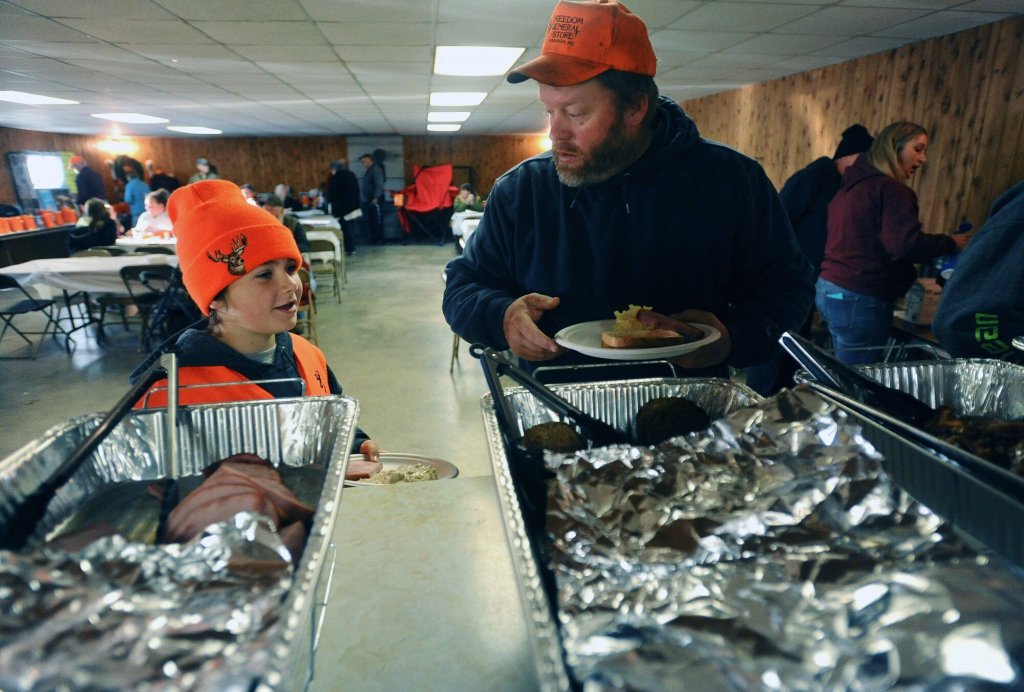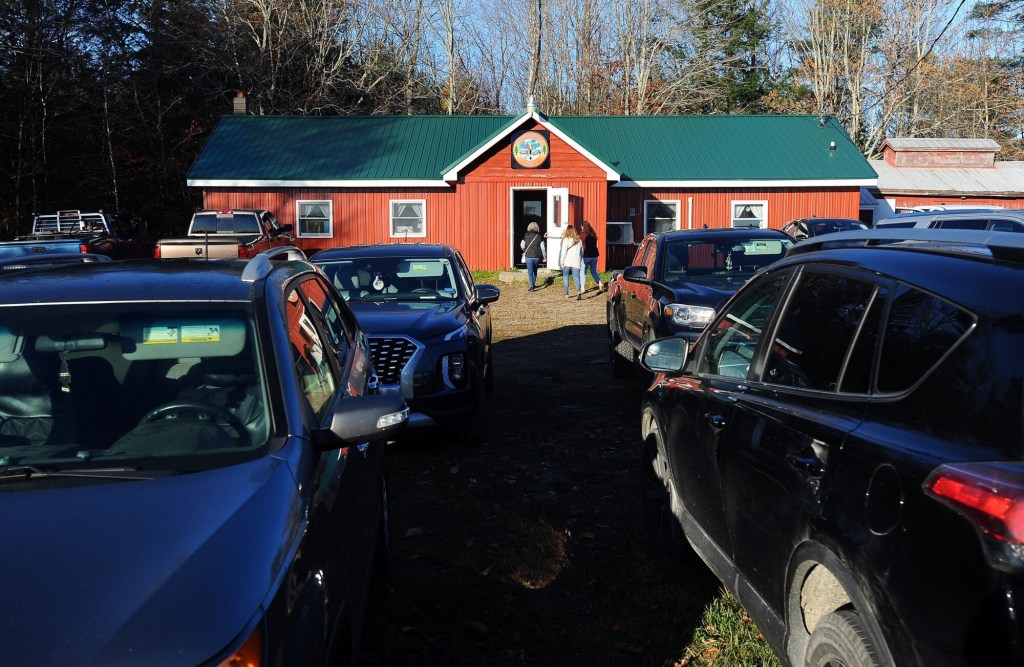With the fall hunting season in full swing across Maine, state agencies are working to expand testing for the presence of “forever chemicals” in fish and wildlife with the intention of using expansive testing in Fairfield as a guide for future assessments around the state.
Hunters are faced with new state advisories as to what is safe to hunt and eat, and where it is safe to do so. But even as state agencies work to ramp up testing efforts for forever chemicals, also known as PFAS, in fish and wildlife, their efforts are slowed by a lack of labs with the capability to test animal tissue and organs.
Part of the strategy when it comes to testing wildlife is to use Fairfield as almost a case study to guide future testing in other areas, according to Nathan Webb, director of the wildlife division of the Maine Department of Inland Fisheries & Wildlife. For example, if the department does significant testing of deer and turkeys in Fairfield, and finds high levels of PFAS in deer and low levels in turkeys, the department can say that deer are more likely to have dangerous levels of the contaminants.
So when the department begins testing in another town, officials know to prioritize deer testing, not turkeys. And that information can be helpful when considering how little is known about PFAS in general and the scale of the contamination in Maine, Webb said.
“Our goal is to use Fairfield to better understand, essentially, the scope of the issue,” Webb said. “So in other words, better understand which species may be impacted and the geographic extent of those impacts, so that we will not need to do the same level of sampling in other locations.”
PFAS, or per- and poly-fluoroalkyl substances, are a group of synthetic chemicals first created in the 1940s. The chemicals are both oil and water repellant, which has made them useful in a wide variety of consumer goods. However, the chemicals do not break down in the body or the environment, and have been linked to numerous health concerns.

Billy Gray, with cane, laughs with his cousin Peter Gray, far left, and friend Frederick Stevens, all of Troy, as they advance to the serving line Saturday during the annual Austin J. Grant Memorial Hunters Breakfast at the Snowduster’s Clubhouse in Unity. This year the fundraising breakfast will support Gay Leighton, a widow and retired mail carrier who was recently diagnosed with cancer. In addition, proceeds will be used to fund a local driver’s ed student, pay an elderly resident’s taxes and buy heating oil for a senior citizen. The first day of deer hunting season for Maine residents (with firearms) began Saturday amid several earlier state advisories about fish and game, including deer, being contaminated by PFAS chemicals. Rich Abrahamson/Morning Sentinel
The contamination in Maine has been tied to the spread of sludge, a wastewater treatment byproduct, which was used as an alternative to fertilizer. In recent years, the Maine Department of Environmental Protection has found extremely high levels of PFAS in the water of private wells in the Fairfield area and other locations across Maine.
“For us this is really a unique scenario in the sense that, most things that we deal with, from a wildlife conservation or management perspective, we have previous experience with, or at the very least can lean on colleagues across the country that have dealt with similar issues in other jurisdictions, and this is one where that’s just not the case,” Webb said.
After the contamination in Fairfield came to light in 2020, state agencies began testing for PFAS in fish and animals, and those initial results have already prompted consumption advisories for residents. Last November, the Department of Inland Fisheries & Wildlife issued a do-not-eat advisory for deer in the Fairfield area, after testing found PFAS in meat and organs from deer in the area.
That do-not-eat advisory remains in effect for the greater Fairfield area this year, as the fall deer rifle season got underway Saturday.
Several months after the deer advisory, the Maine Center for Disease Control and Prevention issued another consumption advisory, recommending residents limit consumption of freshwater fish from seven bodies of water in Maine after finding PFAS in fish as well.
Many of the locations had advisories to limit consumption of certain species of fish, but state officials went a step further with two locations in Fairfield, saying no fish should be consumed at all if caught at ponds owned by the Police Athletic League or at Fish Brook or its tributaries.
As the Department of Inland Fisheries & Wildlife has worked to do further testing of both animals and fish, officials have run into a recurring problem — finding labs that are capable of doing the testing. Few labs have the ability to test for PFAS in tissue, and those that do are in high demand, meaning a longer delay in getting results, Webb said.
The wildlife division has a contract with four labs to test for PFAS, and are primarily working with a lab in Massachusetts because there are no labs in Maine that can test tissue and meat, he said.
The fish testing efforts ran into the same issue, said Francis Brautigam, director of fisheries and hatcheries with IF&W. But the department now has a contract with a lab for testing fish tissue, and has developed a thorough sampling protocol for fish.
“A little bit of a holdup here was securing a contract with a lab to do the testing and that’s actually taken some time,” Brautigam said. “Part of the reason for that is, as you can probably imagine, the labs that provide those types of services are being inundated with requests for testing, not only from states, but also from private citizens.”
The first batch of samples have been submitted to the lab, Brautigam said, but he is not expecting a fast turnaround for results. Nonetheless, the department will continue to get more fish samples this fall and possibly into the spring.
The department’s strategy is to start with popular bodies of water — locations where they know people are fishing and then eating the fish. The department has identified 48 bodies of water around the state they plan to test, which includes eight fish culture facilities, Brautigam said.

Vehicles fill the parking lot Saturday as people arrive for the annual Austin J. Grant Memorial Hunters Breakfast at the Snowduster’s Clubhouse in Unity. This year the fundraising breakfast will support Gay Leighton, a widow and retired mail carrier who was recently diagnosed with cancer. In addition, proceeds will be used to fund a local driver’s ed student, pay an elderly resident’s taxes and buy heating oil for a senior citizen. The first day of deer hunting season for Maine residents (with firearms) began Saturday amid several earlier state advisories about fish and game, including deer, being contaminated by PFAS chemicals. Rich Abrahamson/Morning Sentinel
He also said he hopes the department will be able to complete a fish consumption survey to find out which fish residents are eating and where they are from, to better guide the department’s testing efforts.
The Department of Environmental Protection is also working to test fish for PFAS this year, said spokesperson David Madore in an email. This year the department sampled fish from 34 locations, after coordinating with other agencies to identify high priority sites and factoring in results from groundwater and soil testing to identify areas with high levels of PFAS in the environment.
IF&W is also moving forward with expanding testing of wildlife in the Fairfield area.
Last winter, the department did testing on a few turkeys caught in the Fairfield area, which were found to have some amount of PFAS, but far less than the amount found in deer, Webb said. After consulting with the Maine CDC, the department decided the levels of PFAS did not warrant a consumption advisory.
The department then continued with further turkey testing in the spring — getting samples from 51 birds — but are still awaiting the results.
“The intent there was to kind of align the sampling effort with the time period when hunters would be out and harvesting turkeys and then consuming them,” Webb said.
Similarly, the department has gotten further samples of deer in the Fairfield area to test again, in the hopes of updating the consumption advisory, but do not have those results back either. The next step will be to test other animals in the area, Webb said, like ducks, geese, squirrels and hare — other small species of game that hunters may consume.
And while there are still many questions about the extent of the contamination and its ramifications, many hunters are saying they won’t let this deter them, said David Trahan, executive director of the Sportsman’s Alliance of Maine.
“What I’m hearing from folks is they’re not giving up hunting; they’re just moving out of the areas that are hotspots,” Trahan said.
He said he has heard from some people who have been eating wildlife from contaminated areas their entire lives, and don’t plan to stop now.
It can be difficult for hunters to find new areas to hunt if their usual land is found to be contaminated, Trahan said. Just getting access to new hunting areas can be a challenge. He said the most important thing is to get accurate information about the contamination to residents so they can make their own decisions.
“We need to know so that people can be informed,” Trahan said. “They’ll ultimately make their own decisions, but we need the information.”
Send questions/comments to the editors.








Comments are no longer available on this story